Search Images
Browse Content (p. 718)
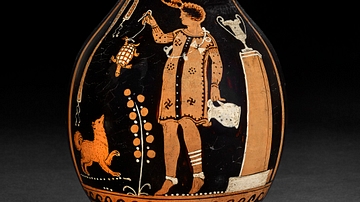
Image
Red-figured Jug - Girl Playing with Tortoise
Red-figured chous (jug). Girl playing with tortoise: in her left hand she holds a white oinochoe; in the right she holds out a tortoise, by a string tied to its hind-leg, to a spaniel to right which looks up at it.
360-350 BCE, Puglia.
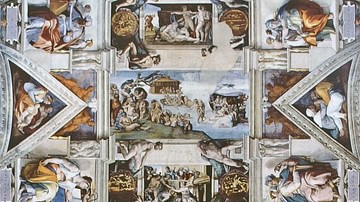
Image
Sistine Chapel Ceiling by Michelangelo
The frescoed ceiling of the Sistine Chapel in the Vatican, Rome. The ceiling was created between 1508 and 1512 CE by the Italian Renaissance artist Michelangelo (1475-1564 CE) and shows the story of Genesis from the Creation to the Great...
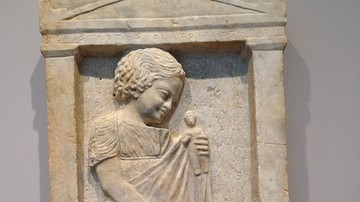
Image
Grave Stele of a Young Girl, Melisto
Stele showing a girl holding a doll in one hand and a bird in the other, which she seems to be offering with a gentle smile to the small dog jumping up to greet her, c. 340 BCE.
Harvard Art Museums.

Image
Amphora with Warrior and Dog
Attic amphora depicting the departure of a warrior, found at Vulci, attributed to the Dikaios Painter, 510-500 BCE. In the centre, a young warrior stands facing a bearded archer in Phrygian costume, who looks down as if in grief. At his...
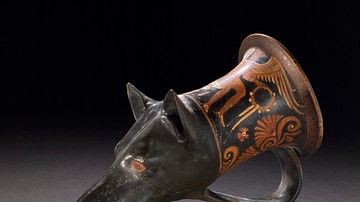
Image
Dog-Headed Rhyton
Red-figured pottery rhyton terminating in a dog's head depicting Eros seated on a rock to the right looking towards the left holding a bunch of grapes in his right hand and in his left a wreath from which hangs a taenia, in the field is flowers...
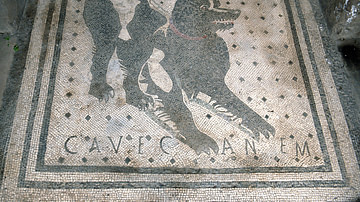
Image
Cave Canem, Dog Mosaic
Cave Canem ("Beware of dog"), Roman mosaic at the House of the Tragic Poet, Pompeii, Italy.
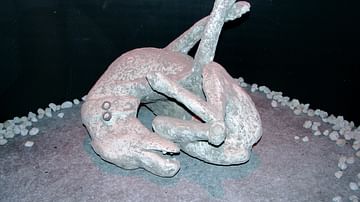
Image
Dog, Pompeii
A cast of a dog from Pompeii. The dog was trapped in the ash flows of the eruption of Mount Vesuvius in 79 CE.
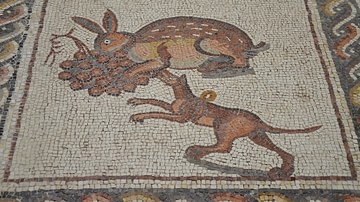
Image
Hunting Dog Mosaic
Detail of the Lod Mosaic: a rabbit eating grapes and a Lakonian hunting dog wearing a harness. The mosaic is believed to belong to a large and well-appointed Roman house in Lod, Israel, c. 300 CE.
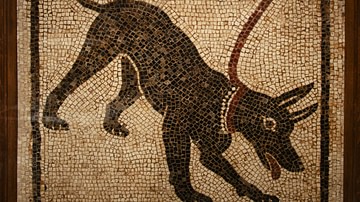
Image
Roman Guard Dog Mosaic
Cave Canem - Beware of dog - sign from Pompeii
Guard dog mosaics were a frequent feature of the entryways to houses in Pompeii.
Archaeological Museum of Naples
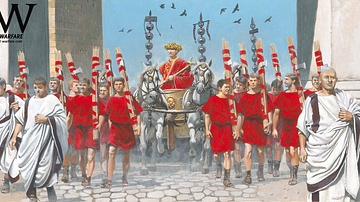
Image
Augustan Roman Triumph
An Augustan era Roman triumph, celebrating a military victory. Illustration by Zvonimir Grbasic.